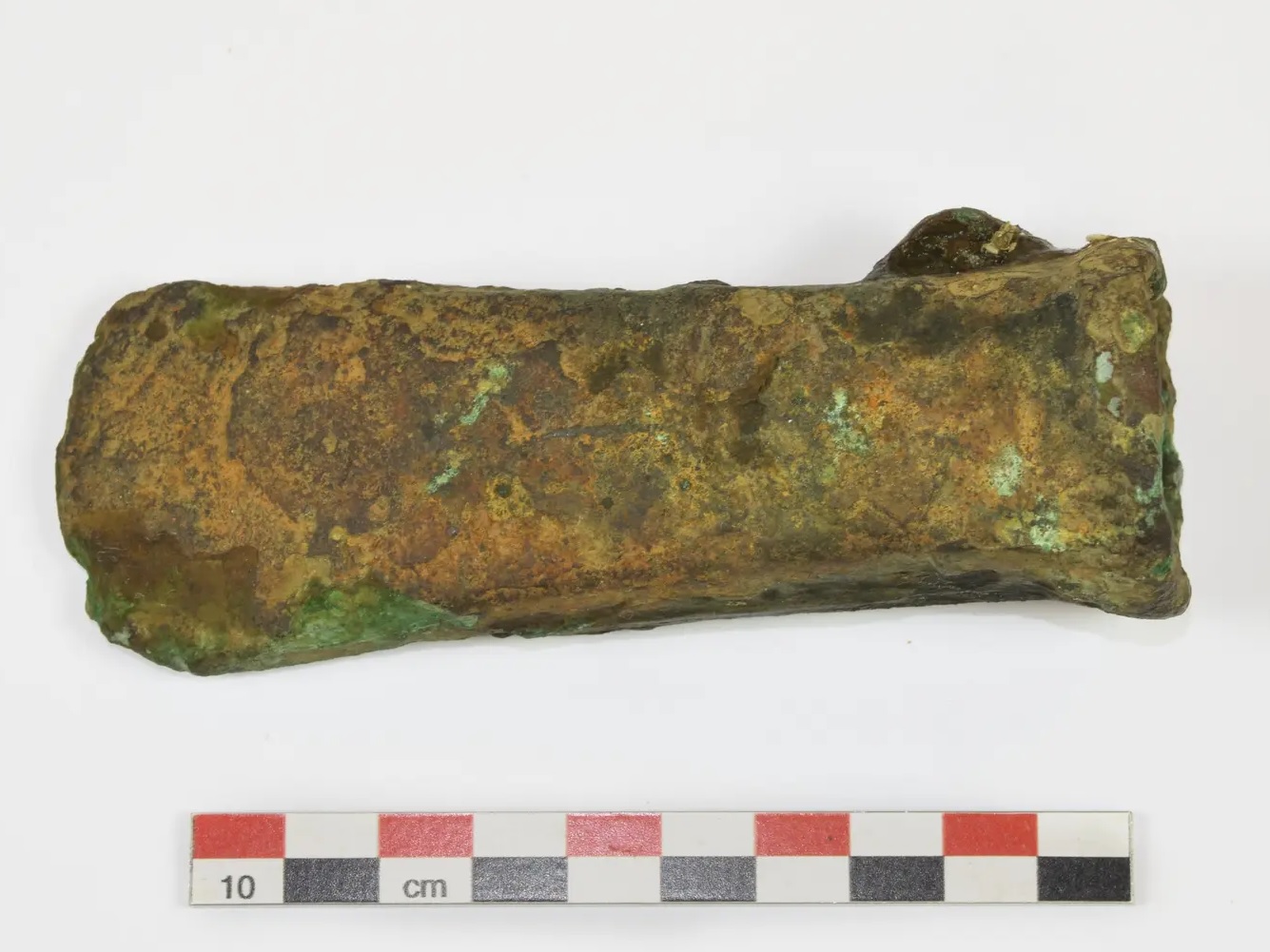Archaeologists from the Norwegian Maritime Museum have discovered a Bronze Age axe off the coast of Arendal in the Skagerrak strait.
The Skagerrak Strait is a body of water that connects the North Sea to the Kattegat Sea. It is situated between the Jutland Peninsula of Denmark, the east coast of Norway, and the west coast of Sweden.
The axe was discovered at a depth of 12 metres during a routine survey for the Norwegian Coastal Administration. It was found on the seabed in an accumulation of beach-rolled flint lumps and has been identified as a hollow axe made of Bronze from 1100 BC.
Hollow axes, known as “celts”, were the dominant axe type found throughout the Nordic Bronze Age (1800-500 BC).
The hollow axe was attached to an angle-bent wooden shaft inserted into the fall opening at the end of the axe. According to the researchers, the example found in the Skagerrak strait weighs 327 grams and measures 118 millimetres in length.
How the axe ended up in the Skagerrak Strait is a matter of debate. Two prevalent theories suggest it was either from a 3,000-year-old shipwreck or is discarded ballast.
If the ballast hypothesis is correct, then the axe and flint was discarded by a ship from the sailing age on the way to Arendal’s port.
Archaeologists plan to conduct further research in the area of the discovery site to determine whether the axe is associated with a shipwreck from over 3,000-years-ago. If this hypothesis proves to be correct, then this is the first known shipwreck site from the Bronze Age in Norway.
Header Image Credit : NMM
Sources : Norwegian Maritime Museum





